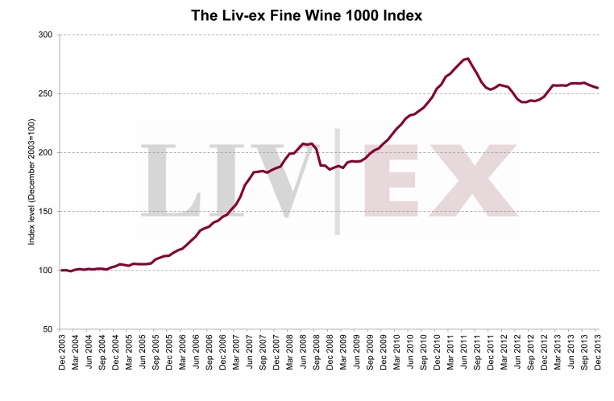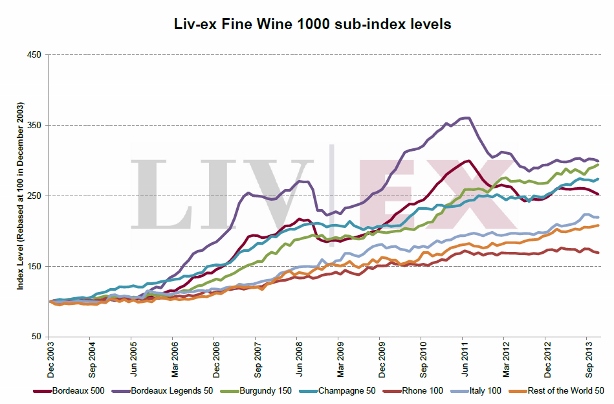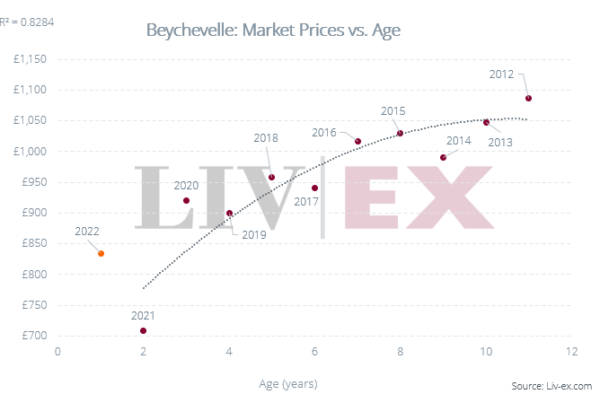On Friday, Liv-ex launched the Liv-ex Fine Wine 1000 index in response to the changing shape of the $4 billion fine wine market. The range of wines trading on Liv-ex has risen by 85% since 2010. Bordeaux’s dominance of the market has fallen as trade shares for other regions have increased. Liv-ex has created the Fine Wine 1000 for merchants, investors and consumers to measure this growing market as accurately as possible.
In 2001, Liv-ex created the industry benchmark Liv-ex Fine Wine 100 index to track the movement of the most sought-after fine wines. The index comprised 92% Bordeaux, reflecting its then market share. Today this stands at below 80% as demand for fine wines from Burgundy, Champagne, the Rhone, Italy and the New World has increased. The Liv-ex Fine Wine 1000 tracks 1,000 wines from across the world using the Liv-ex Mid Price methodology. It is calculated monthly and was rebased at 100 in December 2003.
Last month, the Liv-ex Fine Wine 1000 closed at 255, reflecting a year-on-year rise of 3%. As shown in the table below, the index has outperformed the Liv-ex Fine Wine 100, Gold and the Nationwide House Price Index over a five year period.
The Liv-ex Fine Wine 1000 is comprised of seven sub-indices:
- Bordeaux 500: the ten most recently physical vintages for 50 top Bordeaux chateaux (2001-2010)
- Bordeaux Legends 50: a selection of 50 Bordeaux wines from exceptional older vintages (from 1982)
- Burgundy 150: the ten most recently physical vintages for 15 white and red Burgundy, including six Domaine Romanée Conti labels
- Champagne 50: the most recently physical vintages for 12 Champagnes
- Rhone 100: the ten most recently physical vintages for five Southern and five Northern Rhone wines
- Italy 100: the ten most recently physical vintages for the five ‘Super Tuscans’ and five other leading Italian producers
- Rest of the World 50: the ten most recently physical vintages for five wines from Spain, Portugal, the USA, and Australia.
It would currently cost £2.3million to buy one unit of each wine in the index. The wines represent 79% of the current market activity on Liv-ex by value and 55% by volume.
More detailed analysis of the performance of the index and its sub-indices will follow on the Liv-ex blog in the coming weeks. The index can be viewed on the Liv-ex indices page.








